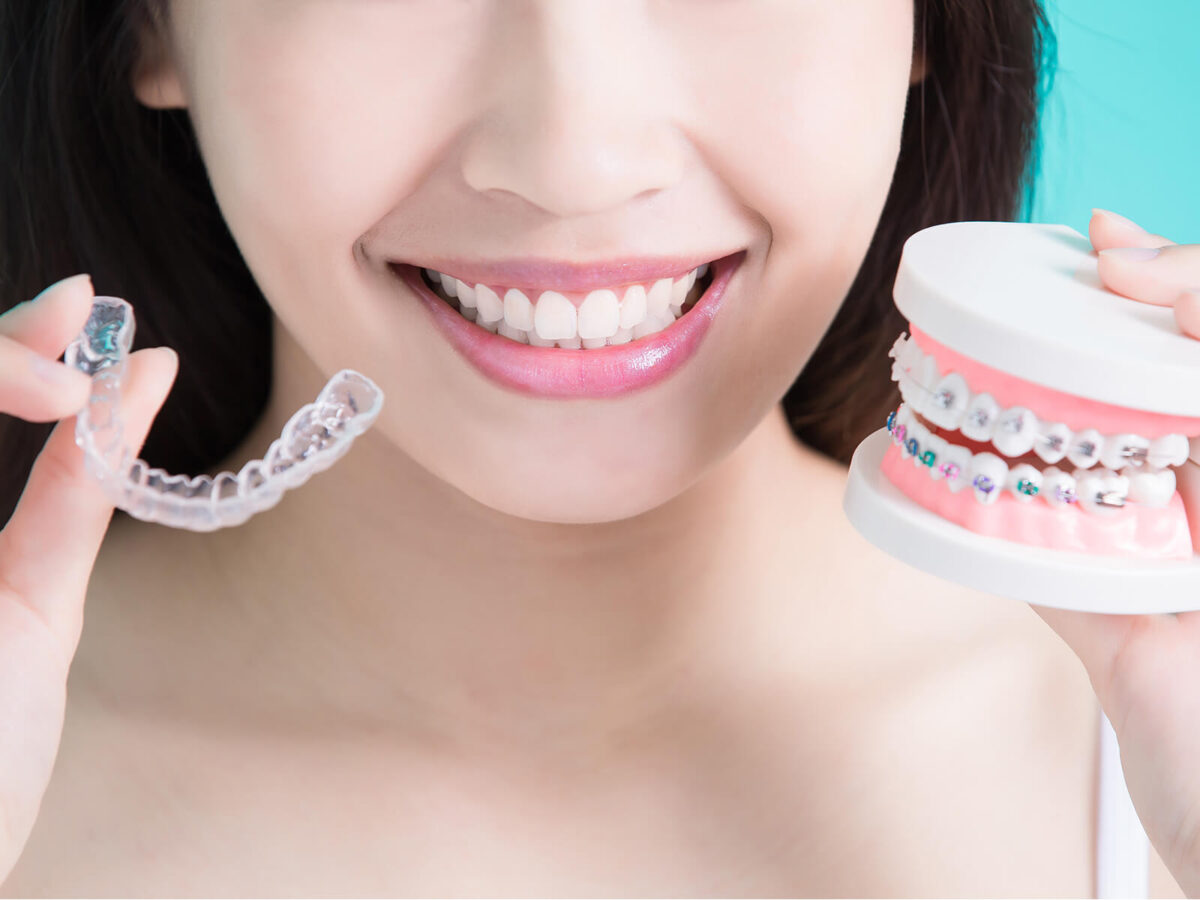Blog
Dental hygiene tips for healthy teeth & gums

Exploring The Latest Trends In Orthodontics: Braces Vs. Invisalign
There is a flood of orthodontic trends in the market. Patients now have more choices than ever before. A lot of people fix their teeth and make them look better with traditional braces or Invisalign aligners.
Each of these ways to straighten your teeth has pros and cons because everyone has different medical needs and personal tastes. Please find out about the newest developments in dentistry as we compare Invisalign to standard braces.
Braces
Getting dental braces is the most common way to fix your teeth. Let us look at the pros and cons of each.
Pros:
- Effective: Braces are the best choice for tough problems. Among other things, they can fix serious misalignment, crowding, and biting.
- Reliable: Dentists have exact control over how patients’ teeth move when they wear braces. This backs up the idea that medicine has wide-ranging and long-lasting effects.
- Affordable: People on a tight budget may choose braces over Invisalign because they are usually cheaper teeth alignment options for fixing teeth.
- Optional: People don’t have to remember to wear aligners every day because braces are set to the teeth and not removable like Invisalign.
Cons:
Aesthetics: Teenagers and other people who are self-conscious about how they look may decide not to get standard metal braces in the future.
- Restriction: People with braces shouldn’t eat sticky foods, popcorn, or other hard things to keep the wires and frames from breaking.
- Carelessness: Having braces on can make it harder to clean all of your teeth. Because of this, gum disease and infections are more likely to happen.
- Irritation: Itching or pain from the clamps and wires is common at the beginning of treatment and after making any changes that need to be made.
Invisalign
Pros:
- Hidden: One benefit of Invisalign braces is that they can straighten your teeth almost totally without being seen. Because of this, it’s a good option for both kids and adults who want a less obvious way to straighten their teeth.
- Removable: Patients can eat while wearing Invisalign plates because they can be removed. Like any other person, they can eat, drink, brush, and floss.
- Comfortable: Because Invisalign trays are made of smooth plastic, they won’t irritate or hurt the patient’s skin like traditional braces and wires do.
- Duration: People may need less time for Invisalign therapy than for traditional braces, depending on how complicated their case is and how well they follow the rules.
Cons:
- Unsuitable: If you have serious orthodontic problems or a complicated bite disorder, Invisalign might not be the best option because traditional braces need more time to heal.
- Compliance: Wearing the aligners for the prescribed 20–22 hours daily is essential for the effectiveness of Invisalign treatment. If not used as directed, Invisalign may not work as fast or as well as advertised.
- Cost: Some patients, especially those without health insurance, may need help to afford these teeth alignment options due to the higher price tag compared to more conventional braces.
- Misplacement: Because they are removable, Invisalign aligners are more likely to be misplaced or ignored, which might postpone treatment and drive up replacement expenses.
Conclusion
You can fix bite problems and straighten your teeth with Invisalign or standard braces. The best option will depend on many factors, such as the therapy’s goals, the available funds, the client’s tastes, and the complexity of the situation.
Talk to an orthodontist to find out which teeth alignment options for straightening your teeth will make your smile look the best. Orthodontic treatment not only gives you a healthier, straighter smile, but it also improves your dental health and self-esteem.


